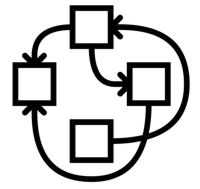| GNU Hurd 0.6 Released |
| Written by Sue Gee | |||
| Thursday, 16 April 2015 | |||
|
The GNU Hurd, the free open source replacement for the Unix kernel, has a new release that is still not suitable for production environments. There are also new releases of GNU Mach and GNU Mig, both of which have reached version 1.5.
New of these releases would probably have gone unnoticed had it not been for this week's selected xkcd cartoon, which together with our editor's commentary on it, led to a raised awareness of the project - and to a flurry of research both within the I Programmer archive and via Wikipedia. If you don't get this joke then it is likely that you don't call Linux GNU/Linux and have no idea what the HURD kernel is. If you do then you will realize that 2060 is a hopelessly optimistic date for the completion of GNU/HURD
So, for anyone who doesn't know about GNU Hurd, or once knew and would like to be reminded, here are some background facts starting with the answers to the key question: What is the GNU Hurd? The GNU Hurd is the GNU project's replacement for the Unix kernel. It is a collection of servers that run on the Mach microkernel to implement file systems, network protocols, file access control, and other features that are implemented by the Unix kernel or similar kernels (such as Linux).
The GNU project was founded in September 1983 with the aim of creating a free open source version of Unix. An initial attempt to build a kernel was based on Trix, developed in the late 1970s at MIT's Laboratory for Computer Science. This early kernel is referred to in the GNU Manifesto where Richard Stallman writes: "an initial kernel exists but many more features are needed to emulate Unix." Another early plan to adapt the 4.4BSD-Lite kernel but in 1987 Stallman proposed using the Mach microkernel developed at Carnegie Mellon University. Work was then delayed for three years due to uncertainty over whether CMU would release the Mach code under a suitable license. The Hurd Project was founded in 1990. Like the name "GNU" , "HURD" is a recursive acronym. According to its initial architect, Thomas Bushnell, who founded the Hurd Project 1991, "Hurd" stands for "Hird of Unix-Replacing Daemons". And, then, "Hird" stands for "Hurd of Interfaces Representing Depth". We have here, to my knowledge, the first software to be named by a pair of mutually recursive acronyms. As both hurd and hird are homophones of the herd, the full name GNU Hurd is also a play on the words herd of gnus, reflecting how the kernel works. The project's logo is called the Hurd boxes and is a graph where nodes represent the Hurd kernel's servers and directed edges are inter-process communication (IPC) messages.
The other question often asked is why continue to develop an alternative free kernel instead of using Linux? The fact of the matter is that Linux came along after a lot of effort had already gone into Hurd and Richard Stallman decided not to cancel the Hurd project on the grounds that: "...our work was leading to something much more powerful. In 2002 Stallman predicted a release of GNU/Hurd later that year but in 2010, after twenty years under development, he admitted to be: "not very optimistic about the GNU Hurd. It makes some progress, but to be really superior it would require solving a lot of deep problems". It took 16 years between the release of Hurd 0.2 and Hurd 0.5 which was released to coincide with GNU's 30th anniversary in September 2013. Now just 18 months later we have Hurd 0.6. In his announcement on GMANE.org, Thomas Schwinge notes that the new release budnles bug fixes and enhacements since the last release and writes: GNU Hurd runs on 32-bit x86 machines. A version running on 64-bit x86 (x86_64) machines is in progress. Volunteers interested in ports to other architectures are sought; please contact us if you'd As in previous years GNU Hurd is mentoring students in the Google Summer of Code which does show a measure of faith in the project. In conjunction with Hurd 0.6 there are new releases, version 1..5 of both the GNU Mach microkernel and the GNU distribution of the Mach 3.0 Interface Generator (MIG). Both of these reached their 1.0 versions in 1997 and had progressed to version 1.4 in 2013.
More InformationRelated ArticlesGNU Manifesto Published Thirty Years Ago
To be informed about new articles on I Programmer, install the I Programmer Toolbar, subscribe to the RSS feed, follow us on, Twitter, Facebook, Google+ or Linkedin, or sign up for our weekly newsletter.
Comments
or email your comment to: comments@i-programmer.info |
|||
| Last Updated ( Thursday, 16 April 2015 ) |




